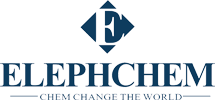Overview
Modified polyvinyl alcohol (PVOH) is graded according to different degrees of polymerization, hydrolysis and copolymerization monomers.
The modification of PVA is mainly to use the double bonds, ester groups and the chemical activity of the hydroxyl group after alcoholization of vinyl acetate to change the side chain group or structure, and introduce other monomers to become copolymers dominated by PVA.
General properties
Polyvinyl alcohol is a water-soluble polymer made by alcoholysis of polyvinyl acetate. The properties of different grades are mainly determined by molecular weight and residual acetyl content.
PVOH (PVC Grade) is the main suspension agent that has been developed for PVC suspension polymerization. The ideal grain size can be obtained at low concentration polymer. In addition, the precise control of the particle size distribution is achieved, and the PVC particles are more spherical. Using the PVOH (PVC Grade), PVC particle density with good porosity is produced while maintaining a satisfactory volume. The plasticizing speed, "fisheye" count and residual vinyl chloride monomer levels are greatly improved by the use of PVOH (PVC Grade).
Storage
Modified PVA for PVC can be stored for an unlimited period of time under appropriate conditions that is in its original packs in closed, dry rooms, at room temperature.
Product Summary
| Title | Main categories | Solids | Degree of hydrolysis | viscosity | Packages |
|
| PVOH 452 | Auxiliary dispersant | 40.0±1.0% | 43.0-47.0 | 800-2400 | 25℃ BF DV2T(mPa.s) | In 200 kg/drum |
| PVOH 552 | Auxiliary dispersant | 53.0-57.0 | <2400 | In 200 kg/drum | ||
| PVOH 725 | Primary dispersant | 98.0 | 71.0-75.0 | 4.8-7.0 | 4% aqueous solution 20 °c(mPa.s) | In 25 kg/bag |
| PVOH 735 | Primary dispersant | 98.0 | 73.0±1.0 | 5.3±0.5 | In 25 kg/bag | |
| PVOH 745 | Primary dispersant | 73.5±1.5 | 6.0±0.5 | In 25 kg/bag | ||
| PVOH 785 | Primary dispersant | 78.0±1.5 | 6.0±0.5 | In 25 kg/bag | ||
| PVOH 8035 | Primary dispersant | 80.0±1.5 | 35.0±3.0 | In 25 kg/bag | ||
| PVOH 8039 | Primary dispersant | 80.0±1.5 | 39.0±3.0 | In 25 kg/bag | ||
| PVOH 8048 | Primary dispersant | 80.0±1.5 | 48.0±3.0 | In 25 kg/bag | ||
| PVOH 8548 | Primary dispersant | 85.0±2.5 | 48.0±3.0 | In 25 kg/bag | ||
| PVOH 8850 | Primary dispersant | 88.0±1.5 | 50.0±3.0 | In 25 kg/bag | ||
Overview Polyvinyl alcohol (PVA for short), organic compound, white flake, flocculent or powdered solid, non-toxic, tasteless, pollution-free, can be dissolved in 80--90 °C water. Slightly soluble in dimethyl sulfoxide. Its aqueous solution has good adhesion and film-forming properties; It has chemical properties such as esterification, etherification and acetalation of long-chain polyols. It is a water-soluble polymer with a wide range of uses, its performance is between plastic and rubber, and its uses can be divided into fiber and non-fiber two major uses.
Overview VAE emulsion is short for ethylene acetate-ethylene copolymerization emulsion, which is a polymer emulsion made of ethylene acetate and ethylene monomer as the basic raw materials and other auxiliary materials through emulsion polymerization. Ethylene and vinyl acetate copolymer is the most important product of ethylene copolymer, generally referred to as EVA. Products with ethylene acetate content in the range of 70%~95% are usually in the emulsion state, called VAE emulsions.
Overview Polyvinyl alcohol film is made of polyvinyl alcohol as the main component, adding additives such as modifiers, and processed by special technology. PVA film is a green functional material that can be degraded into carbon dioxide and water by microorganisms in the soil in a short time which has the effect of improving land conditions.
Overview PolyVinyl Butyral Film(PVB film) is also known as PVB interlayer.Its essence is a thermoplastic resin film, which is produced from PVB resin plus plasticizer. Since it is produced from plastic resin, it has the characteristics of recyclable processing and reusability.The appearance is translucent film, no impurities, smooth surface, with a certain roughness and good softness, with the adhesion of inorganic glass, transparent, heat resistance, cold resistance, moisture resistance and high mechanical strength characteristics.
Overview EVA is a thermoplastic copolymer manufactured through the free radical polymerization of ethylene and vinyl acetate in the presence of initiating agents using the high-pressure bulk polymerization process. EVA's properties vary dramatically from one product to another depending on the content of vinyl acetate in the macromolecule. EVAs with different properties are used for different purposes.
Overview Modified polyvinyl alcohol (PVOH) is graded according to different degrees of polymerization, hydrolysis and copolymerization monomers. The modification of PVA is mainly to use the double bonds, ester groups and the chemical activity of the hydroxyl group after alcoholization of vinyl acetate to change the side chain group or structure, and introduce other monomers to become copolymers dominated by PVA.
Overview Vinyl Acetate Monomer (VAM) is a colorless flammable liquid with sweet ether flavor. There are several different raw materials such as acetylene method, ethylene method, acetaldehyde acetic anhydride and so on. The route of ethylene raw materials is different according to the process, and there are different methods such as ethylene gas phase method and ethylene liquid phase method.
Overview Water soluble PVA fiber is a kind of PVA fiber made from polyvinyl alcohol through wet spinning, heat treatment and crimping-oiling in water at normal temperature. It is good in dry heat stability, physical and mechanical properties. The remarkable characteristic is its total dissolving in water at a range of temperature. This kind of PVA fiber is mainly used in Textile industry for making the yarn and cotton.
Overview Provided that compounds are are appropriately formulated and processed, the resulting vulcanizates demonstrate excellent resistance to environmental factors such as weather and ozone. Additionally, they exhibit strong resistance to aging, hot air, and various chemicals, as well as adequate resistance to oils and gasoline. Furthermore, these materials possess favorable mechanical and physical characteristics, along with notable abrasion resistance.
Overview PVA high strength and high modulus fiber takes polyvinyl alcohol as its major raw materials. It has good prosperities such as high modulus, high strength, alkali and acid resistance, heat resistance, anti-crack, anti-infiltration and so on. High strength and high modulus PVA fiber also has good compatibility with cement and other macromolecule material and can prevent the microcrack caused by plastic shrinkage of the concrete.
Overview Polyvinyl butyral (PVB for short) is the product of acid catalysis of polyvinyl alcohol and butyraldehyde. Because PVB molecules contain long branched chains, they have good compliance, low glass transition temperature, and high tensile strength and impact strength. PVB has excellent transparency, good solubility, good light resistance, water resistance, heat resistance, cold resistance and film formation. It has high adhesion to materials such as glass and metal (especially aluminum). Therefore, it has been widely used in the manufacture of laminated safety glass, adhesives, ceramic paper, aluminum foil, electrical materials, FRP products, fabric treatment agents and other fields, and has become an indispensable synthetic resin material.
Overview Dispersible polymer powder is a modified emulsion powder obtained by spray drying of a binary or ternary copolymer of vinyl acetate and tertiary vinyl carbonate-VeoVa or ethylene or acrylate, which has good redispersibility, redispersed into an emulsion when in contact with water, and its chemical properties are exactly the same as the initial emulsion.
Overview Polyvinyl acetate multipurpose white glue series adopts the latest process and formula to produce water-based adhesives, which have the advantages of high adhesion, fast curing and easy brushing, which effectively solves the problem of low bonding strength and long curing time of white glue, and has good water resistance and moisture resistance after curing.
Overview JiangSu ElephChem Holding Limited offers a wide range of chloroprene rubber products, primarily including seven major series: CR244, CR248, CR232, CR121, CR322, DCR213, and DCR114. These products boast a complete range of grades, excellent quality, and outstanding cost-effectiveness. They include slow-crystallizing, cold-resistant rubber series products comparable to those of Denka and ARLANXEO, and have received widespread acclaim from domestic and international customers.
Overview PVOH 735 PVC Grade is a 73 mol% hydrolyzed polyvinyl alcohol dispersant developed specifically for suspension polymerization of vinyl chloride. It meets PVC manufacturers' requirements for better particle size control at lower addition levels than conventional 72.5% grades.
Overview PVOH 745 PVC Grade is a 74 mol% hydrolyzed polyvinyl alcohol. It has better quality and stable performance, bringing stability to customer products.
Overview Modified PVOH PVA 785 is a 78 mol% hydrolyzed polyvinyl alcohol It is specially used to adjust the particle shape of SPVC, or to make blended resins, as well as copolymers of vinyl chloride and vinyl acetate.
Overview PVOH 452 PVC Grade Polyvinyl Alcohol is a 43 mol% polyvinyl alcohol aqueous solution. Unlike conventional polyvinyl alcohol (soluble in specific alcohols but insoluble in water), it is completely soluble in water and contains very low levels of methanol.
Overview PVOH 552 PVC Grade is a 53 mol% hydrolyzed polyvinyl alcohol. Using a unique batch process, the degree of hydrolysis and particle size of the product can be more effectively controlled.
Overview PVOH 8035 PVC Grade for S-PVC Resin is an 80 mol% hydrolyzed polyvinyl alcohol. It has a high molecular weight and medium viscosity, allowing for effective control of particle size distribution, porosity, and bulk density in PVC resins.
Overview Polyvinyl Alcohol PVOH 8039 is an 80 mol% hydrolyzed and medium viscosity polyvinyl alcohol used primarily as the primary suspending agent in the production of polyvinyl chloride.
Overview PVOH 8048 PVC grade is a high viscosity polyvinyl alcohol with a degree of hydrolysis of 80%, specially developed for use as a primary suspending agent in the suspension polymerization of vinyl chloride.
Overview Modified PVOH PVA 8548 for PVC is an 85 mol% hydrolyzed and high viscosity polyvinyl alcohol It can be used in hybrid resins, paste resins and high vinyl acetate copolymers with special requirements, and can also be used in all grades of general resins.
Overview PVOH 8850 PVC Grade is an 88 mol% hydrolyzed polyvinyl alcohol with high molecular weight and high viscosity.
Overview PVOH 725 PVC Grade is a 71 mol% hydrolyzed polyvinyl alcohol specifically developed as a primary suspending agent for suspension polymerization of vinyl chloride. It offers low molecular weight and low viscosity.

Signup our newsletter to get update information, promotion and insight.
